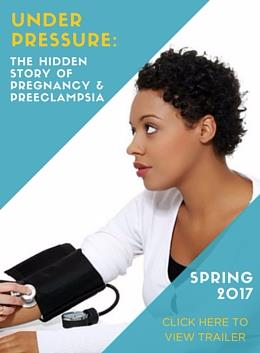By: Molly Walker
When periviable (extremely premature) birth occurs or appears inevitable, clinicians should counsel parents or family on expected fetal outcomes as well as appropriate interventions, according to the first ever consensus care document on the subject from the American College of Obstetricians and Gynecologists(ACOG) and the Society for Maternal-Fetal Medicine(SMFM).
Clinicians and the family should work together to formulate a predelivery plan with recommendations for care, which may be modified based on the clinical situation, according to the consensus statement published in Obstetrics and Gynecology.
Periviable birth is defined as that taking place from 20 to 25 weeks gestation, with concurrence among several medical societies. It was developed at a joint workshop between ACOG, SMFM, the American Academy of Pediatrics(AAP), and the National Institute of Child Health and Human Development(NICHD).
Kecia Gaither, MD, MPH, maternal fetal medicine specialist and director, perinatal outreach at Montefiore Health System in New York City called the document “a well thought-out logistical approach” for dealing with these preterm births. Gaither was not involved with the document’s development.
“Despite technological advances within the perinatal arena, preterm birth — particularly that within a specific gestational age — remains a formidable obstacle for parents, providers, hospitals and insurers, both nationally and globally; it is indeed a public health crisis,” she told MedPage Today via email.
Traditionally, only birth weight and gestational age had been used to predict outcomes as well as criteria for resuscitation, but the NICHD Neonatal Research Network developed a more specific research tool based on outcome data from 4,446 extremely premature infants born at a level III or IV NICHD hospital between 1998 and 2003. Based on their research, they came up with five combined variables to more accurately predict neonatal outcomes compared to gestational age and birth weight alone:
· Gestational age
· Birth weight
· Exposure to antenatal corticosteroids
· Sex
· Plurality
The authors recommend periviable deliveries at a level III-level IV NICU, level III-IV maternal care designation, or both, because they have the necessary tools and support systems in place for both the mother and the newborn. Co-author Anjali Kaimal, MD, MAS, who helped to develop this document for ACOG/SMFM, emphasized the importance of the appropriate level care facility in an email to MedPage Today.
“Based on the high likelihood of complications, when possible, periviable deliveries should occur in centers with advanced levels of neonatal and maternal care,” she said. “Care during the periviable period is complex and ethically challenging, and ongoing family counseling and incorporation of informed patient preference is crucial as the clinical situation evolves.”
The provider should counsel parents and families about appropriate interventions throughout the process, including a recommendation regarding assessment for resuscitation. The authors note that continuous electronic fetal heart monitoring is not separately considered as an intervention, but may be considered if intrauterine resuscitation may affect the newborn’s outcome.
They offer a number of interventions which may be appropriate for periviable birth, including:
· Neonatal assessment for resuscitation
· Antenatal corticosteroids
· Tocolysis for preterm labor to allow for antenatal corticosteroid administration
· Magnesium sulfate for neuroprotection
· Antibiotics to prolong latency during expectant management of preterm PROM if delivery is not considered imminent
· Intrapartum antibiotics for group B streptococci prophylaxis
· Cesarean delivery for fetal indication
Not surprisingly, nearly all interventions are recommended for infants at 24 or 25 weeks of gestational age. Specifically, antenatal corticosteroids have been associated with a reduction in death and neurodevelopmental impairment at 18-22 months of age for infants born at 23-25 weeks gestation. When administered prior to 30 weeks gestation, magnesium sulfate has also been shown to reduce the risk of cerebral palsy (relative risk 0.68, 95% CI 0.54-0.87) without increasing mortality (RR 1.04, 95% CI 0.92-1.17).
For infants born at 20-22 weeks gestation, only antibiotics to prolong pregnancy after preterm labor or preterm rupture of membranes are recommended as an intervention. At 22 weeks, providers may also consider assessing for resuscitation.
The authors note limitations of the NICHD tool to predict outcomes, including that the models used to derive the tool are based off older data and may not provide the most accurate estimates, as well as the fact that gestational age may not be accurately known in all cases and birth weight is only an estimate prior to delivery.
Gaither said that this approach, where information can actually be given to parents to aid in their understanding of the medical nuances involved in their care, will help to facilitate their decision making process. She added that she hoped it will also aid in establishing a consistent “thought pattern” in approaching the situation across sub specialties.
“[This will] encourage more areas for research opportunities, not only in how to contend with, but more importantly, how topreventthe situation at hand,” she concluded.






